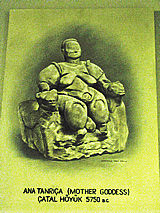 Mother
Goddess from Catal Höyük |
The Ephesos Museum brings
it back to one point. Ana-tolia means "Land of the Mother". Here a display of
archaic Mothers |
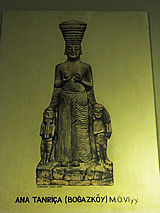 Mother Goddess
from Bogazköy |
 |
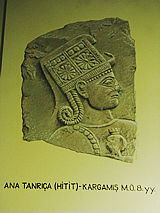 Mother
Goddess from Kargamis |
 |
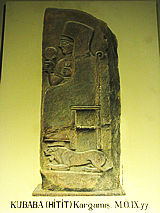 Mother
Goddess Kubaba
(Hittite) |
|
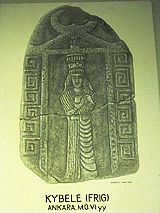 Mother
Goddess Kybele
(Phrygia) |
 |
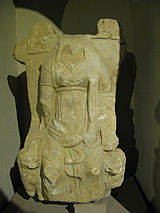 |
 |
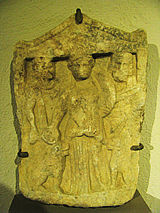 |
Some classical Kybele altars |
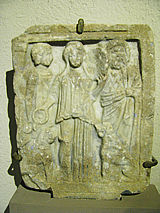 |
 |
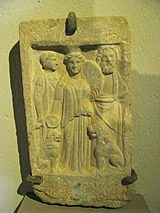 |
 |
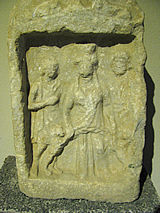 |
The glorious Artemis, successor to Kybele |
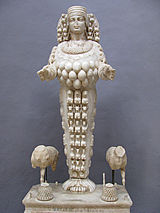 |
|
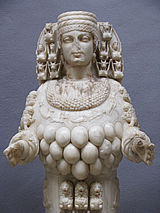 |
|
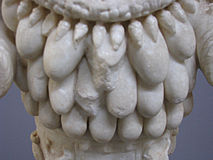 Balls
as symbols of fertility |
To understand the symbolism
behind the Artemis statue, you have to go back to spiritual Experience first. The Essence
is. "Light is born out of Darkness" or "God is born out of the Cosmic
Womb". The Mother is the Ultimate, while the Gods are Her Sons. That's why Kybele is
called "Mother of the Gods". In the old times Gods were identified with the
seasons. Hence, there is One Mother, while Gods come and go. |
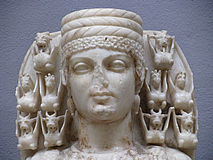 |
 |
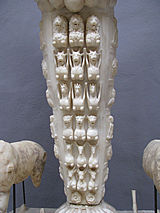 Her
Son/Lover/Beasts |
 |
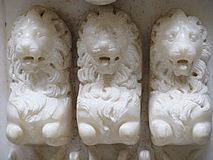 |
The Mother has thus many
Son/Lovers. In the oldest times men identified themselves with animals, in order to drain
their strength, virility and fertility. So, originally the "Mother and Her Sons"
was understood as the "Lady and the beasts". That is exactly what you see here.
Artemis is covered with beast-Gods, Her so-called "breasts" are probably the
balls of Her Sons |
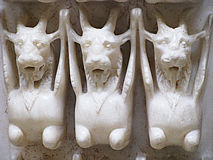 |
 |
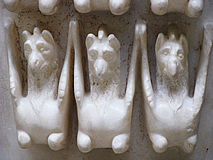 |
 |
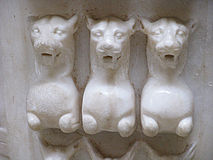 |
So, to say that Artemis is the
"Goddess of the animals" is at best very superficial. Of course She is, because
all living creatures are born out of Her. But the deeper meaning lies hidden. She,
together with Her God-Sons-Beasts are representing the Cosmos, in which She is the
Ultimate |
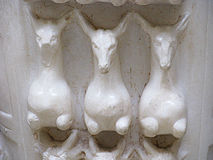 |
 |
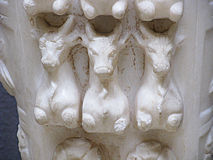 |
 |
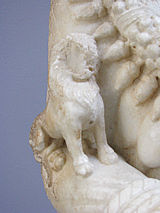 Son-lion
on Her upper arm |
Later patriarchy has all
changed it. They put the things upside-down. First God and then Mary-Sophia-Kuan Yin-Matri
Devi-Shekinah as "His Consorts". He imbues Her with His Divine "Word",
so that She becomes His instrument. The Reality is the the other way round, though. The
Mother is giving birth to God, He is Her Servant*. The Artemis statue of Ephese is one of
the last testimonies of Eternal Truth. Very impressive, indeed! * Even some feminist writers are not aware of the
"Sophia" trap |
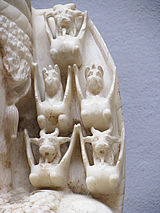 |
| By the way, now it may become
clear to you, why the early Church choose Ephese (in 431) in order to declare Mary (its
patriarchal version of the) "Mother of God"...... |
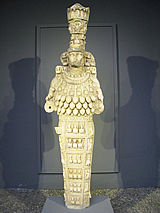 |
 |
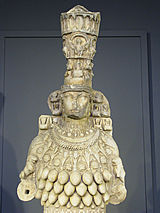 |
|
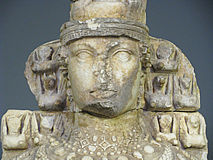 |
 |
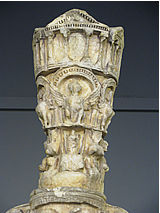 |
 |
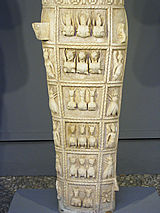 |
 |
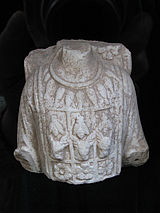 |
|
 |
|
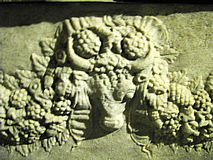 |
The Bull: Son/Lover of the
Great Mother. NB. Spanish bull fights symbolize the victory of the "Christian
hero" (the toreador) over the pagan God.....Apart from animal suffering this practice
should stop immediately, because of its religious intolerance! |
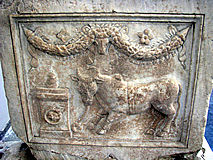 |
|
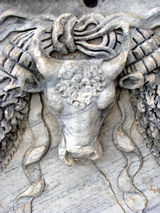 |
|
 |
|
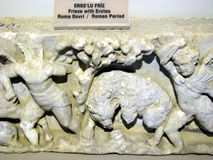 |
|
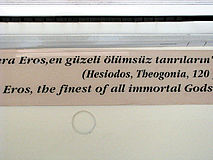 |
|
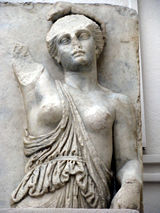 |
In the line of
"succession" (Kybele/Artemis) Aphrodite came next. The Lover aspect of the
Son/God became emphasized*. So, Eros is just another form of the Green Man * In temples on Cyprus there existed even special "lover
boys". See section: Istanbul |
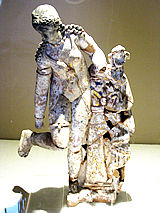 Aphrodite
and Eros |
|
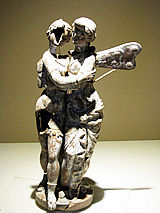 Love wasn't
just symbolic or abstract, but very "down to earth", as well |
|
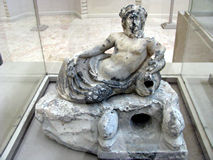 River
God, "brother" of Green Man |
|
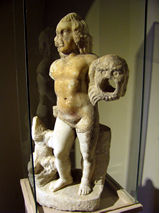 Satyr
with mask |
|
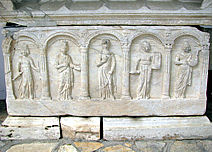 Goddesses/Nymphs/Graces
on sarcophage |
|
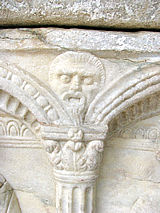 |
With their protectors.....the
Green Men! |
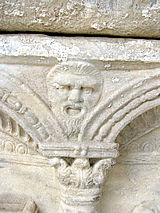 |
|
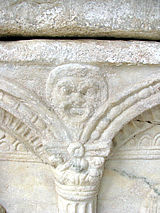 |
|
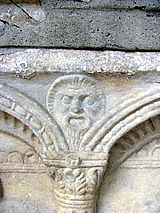 |
Priapus, the God of fertility,
kin of Green Man in his aspect of promoting fertility (right) |
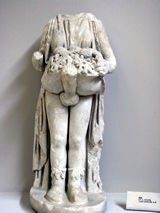 |
|
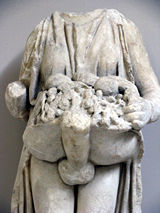 The
abundance of it |
|
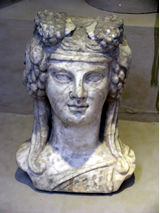 |
At last the Green Man with a
human face: the God Dionysos |
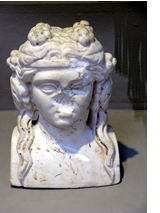 |
|
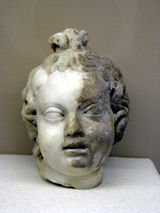 Baby
Dionysos |
|